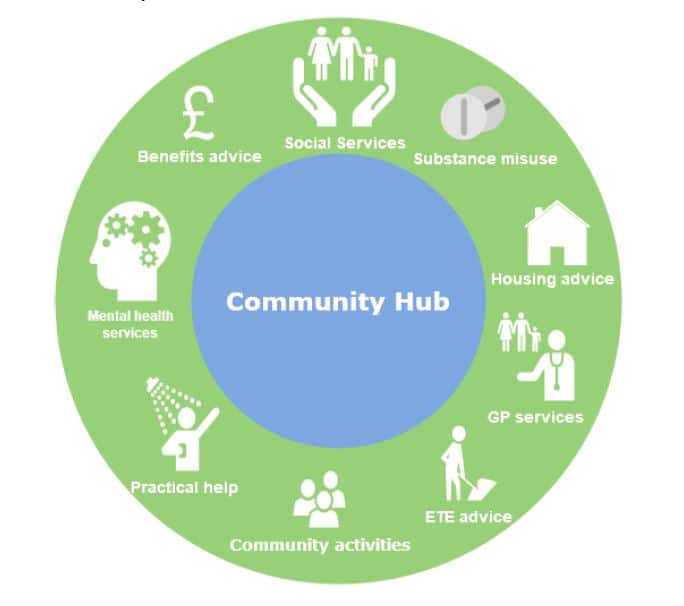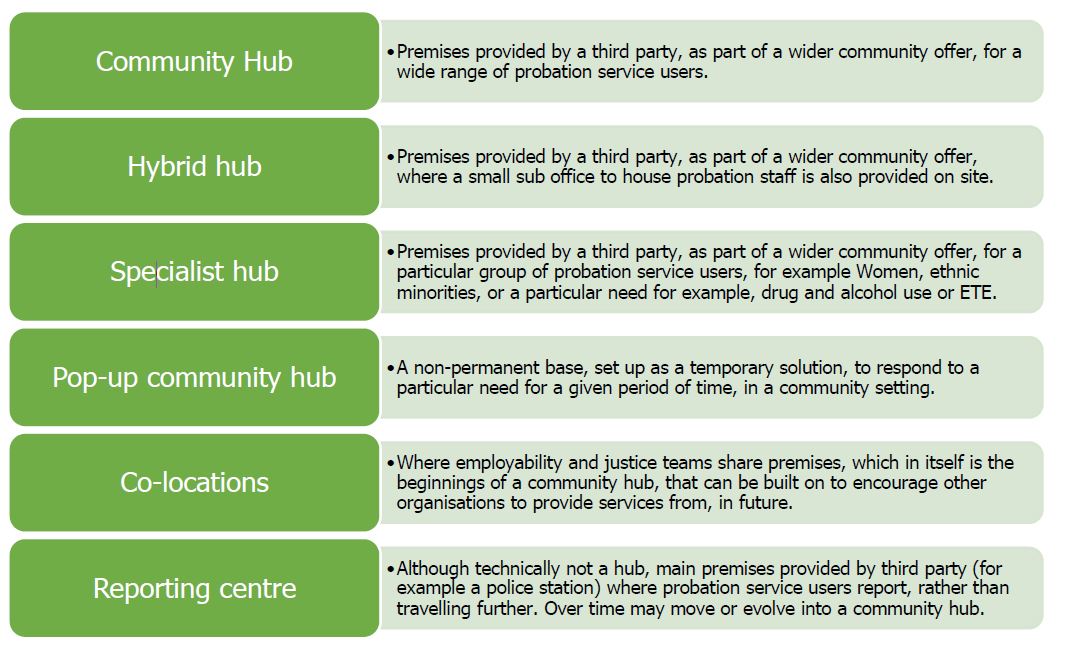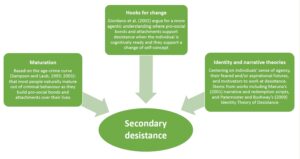Community hubs
Earlier this month, HMI Probation published the 10th in its series of Research and Analysis Bulletins, looking at “The role of community hubs in helping to deliver probation services and support desistance”.
Supporting desistance?
Community hubs are a growing phenomenon in the field of probation, many having been introduced by Community Rehabilitation Companies (CRCs) following the implementation of the Transforming Rehabilitation reforms in 2014. The aim in most cases was both to streamline and economise service provision (enabling probation providers to deliver a service without the need for expensive service user facing offices and interview rooms) whilst providing an enhanced service for probationers. There is an argument that moving probation supervision from probation offices to community hubs can reduce the labelling effect and improve the chances of the person on probation moving on from an ‘offender identity’. Ultimately, community hubs can be seen to have the potential to support social reintegration.
While there are many different definitions and forms of community hubs, they tend to provide offenders with services to address drug and alcohol use, housing, mental health, education and employment with the overarching rationale being that people who use the hub can benefit from a multiagency approach while meeting the requirements of their court order or prison licence. In many cases, the personal probation can often attend beyond the period of their statutory supervision to access the resources at the community hub.
The report includes a typology of community hubs via the graphic reproduced below:
Findings
The bulletin found that community hubs are viewed positively by both probation staff and service users with a number of benefits being highlighted:
- Hubs are seen to contribute to desistance from offending, personal wellbeing and compliance with supervision.
- Hubs can provide practical and social opportunities to support desistance in its three forms: primary/behavioural, secondary/identity and tertiary/belonging.
- The community hubs all provide or can access services which, to varying degrees, address key offending-related needs such as accommodation, substance misuse, domestic abuse, employment and training.
- The hubs provide opportunities to develop/rebuild community and family relationships which are vital in developing a non-criminal identity and lifestyle.
- Hubs are welcoming and non-stigmatising environments compared to ‘traditional’ probation offices.
However, the bulletin also identifies a number of key challenges of the community hub approach:
- It is felt that there is a lack of awareness of community hub services and benefits by those probation staff with little experience of the approach.
- Attention needs to be given to managing the risks of some service users in those sites with fewer security measures.
- Attention also needs to be given to striking the right balance between statutory enforcement and providing care and support.
The report concludes with four key recommendations to probation organisations considering operating via a community hub model:
- Adopting a broad approach to service provision by forging partnerships with all key local agencies.
- Being responsive to the organisational and cultural differences between partners and ensuring mutual understanding and buy-in from the outset.
- Putting individual service users at the centre of service provision and delivery by involving them in planning and developing community hubs.
- Considering how the physical layout and location of the hub will affect service users in terms of avoiding stigmatisation and being as supportive as possible.
It will be interesting to see whether, when the responsibility for all offender management is transferred back to the National Probation Service under the current redesign of the probation system, the NPS also decides to adopt a community hub approach.









